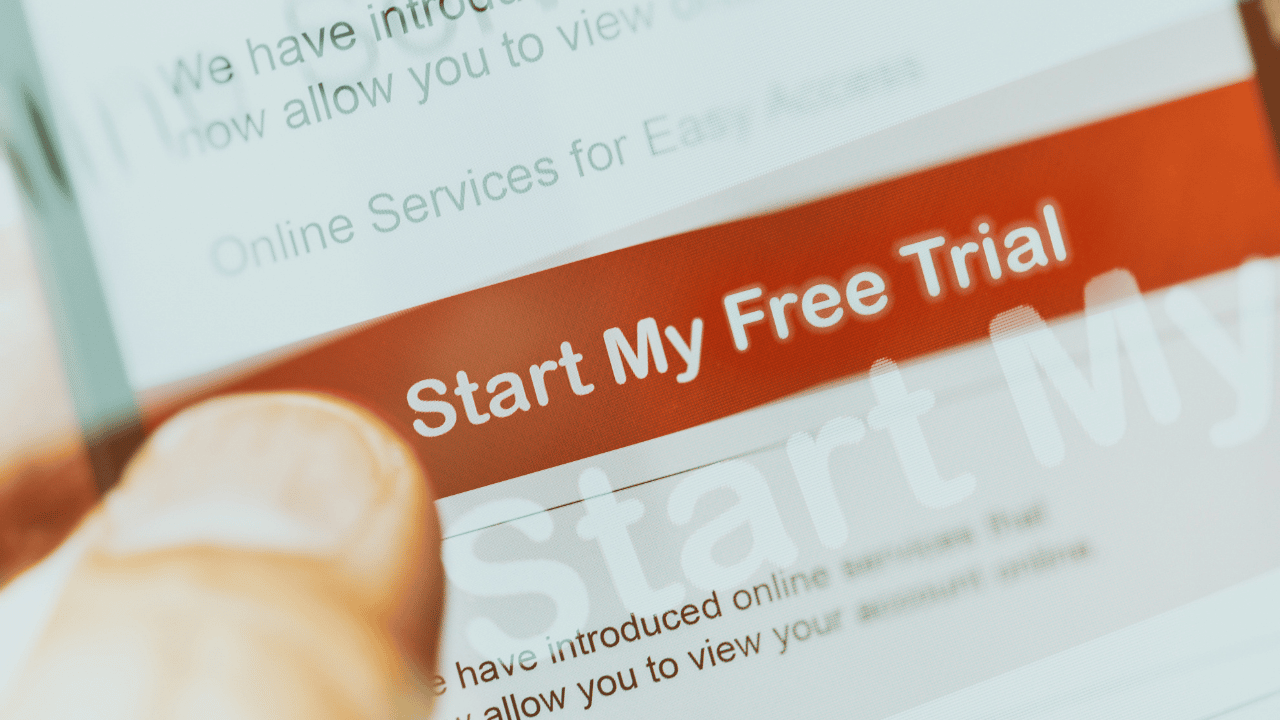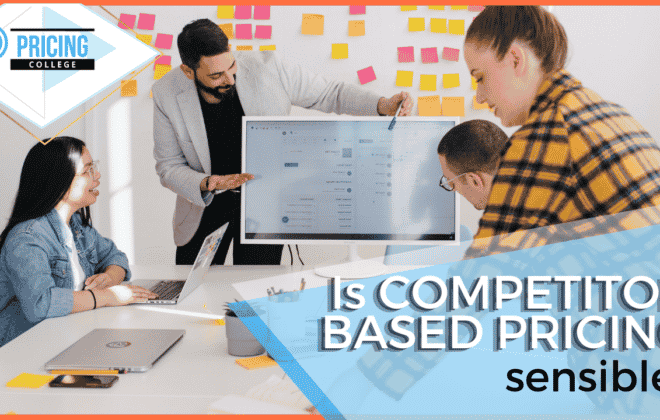
Freemium Model to Pay Model 💰 Podcast Ep. 100
In today’s episode, we will discuss what moving from freemium model to pay model really means.
Listen on Apple Podcasts Listen on Spotify Listen on Google Podcasts Listen on Stitcher Listen on Amazon Music
Notes on the time-stamped show:
[00:00] Introduction
[00:50] Psychological Pricing
[03:09] Pricing Cliff
[05:18] Freemium Model
[07:34] Effects of separation Pricing from Business Model
[09:26] Start ups common mistakes
How freemium model to pay model impact the consumers?
There is an old saying in pricing that demand collapses when pricing goes from zero or free to even just one cent or one penny.
So we want to discuss that today. And it’s something that anybody in a start-up business. Or a company providing freemium services should really consider when they’re looking to move to monetization. Or to actually start making money.
Because often you can build a huge audience, certainly on social media and those things when it’s free. But trying to move to a revenue structure. That’s a whole different ball game.
Freemium Model to Pay Model: Psychological Pricing
In a way, it reminds me of psychological pricing. And I think a lot of psychological pricing comes from this idea of price point sensitivity. Then try to think about what the human response is to price points.
I’ll give an example. Often you can see perishable goods where there’s a lot of price sensitivity around those sorts of goods. That if you do change the price point up, even by a cent, then the volume just drops off. People just don’t buy it.
So, if you can recall a product called Gourmet Garden, they are herbs in a tube. When they first came out, it was a fairly noble type of product. And for many years, I was noting that they always hovered around the 3.99 price point.
Sometimes they would go to 4 but often come back down to 3.99 very, very quickly. And thinking about that, there was a psychological threshold with customers to that 4 dollars, that they would just stop buying it.
Even if they knew the utility of that product. They couldn’t get past that point. And for many years, I wondered, how that company probably did in terms of profitability. Because they were producing top-quality products. But obviously not getting the volume they want at the price point they wanted for that.
So they have to try various things, which they did. Shrinkflation, making the jar size even bigger, because they couldn’t change that price point. But funny enough, I’m just looking at this Gourmet example now, they are now at 4 dollars and 5 cents.
So, over time, they have gradually moved the market to that price point. That then speaks to something called price positioning as well.
Freemium Model to Pay Model: Price Cliffs
I think that’s referred to as “price cliffs” and those sorts of things, as they are natural impairments to price rises. And I suppose the ultimate price cliff is what we are discussing, which is between zero and one cent.
I suppose you look at the barriers to why would somebody move from zero. When in zero…
- You don’t provide a credit card
- You don’t have to pay anything,
- Generally, you don’t have to give them your information,
- You are not committing to stuff
And when you move to a payment system, I suppose the relationship changes completely. You’ll have to provide a credit card, whether on a direct debit system, an auto charge, or pre-pay.
That immediately puts off a lot of people, who:
a) don’t have the money;
b) they will completely re-evaluate how they value the product and service.
And let’s be honest, if something is free, infinitely free and in infinite quantities. You don’t really have to put any time into putting a value on it. Theoretically, it can be worthless to you and still consume in large amounts.
So when you put a price on something the complete value negotiation changes.
The complete structure of the discussion changes. And what people will take for nothing because there’s just no pain to them.
And what I mean by pain is they are trading something for that. They’re trading credit card details, entering stuff to the system, even giving passwords, and all that stuff.
And if you are a sustainable business and want to go beyond that to really make your business sustainable. You have to charge more than just one cent. Unless it’s in very unusual circumstances.
I think in startups, people often will look at businesses that have very large network effects, huge number of users. But can they actually move into an actual business model?
And I think Facebook has seen this, whereby I think they went to an advertisement model, it was almost impossible for them to get their users to pay.
Freemium Model to Pay Model: Startup Companies Pricing Model
The startup pricing and the freemium model, it was sort of a naive assumption by a startup founder to believe that pricing is separate from the business model.
But often when businesses start up. They assume it is just an administrative task as supposed to be something that drives strategy. It is highly connected to the business model.
And I think that the freemium trial was in a way showcased that mistake.
And what they’ve done, subsequently, now they don’t call it freemium anymore. It’s like a free trial and they’ve cut it to a time limit often 30 days. Once you’ve signed up to the free trial, you’re giving them something. You are giving them straight away your details.
And what have we learned when we do that, in the busy life that we all live. We go “Alright, there’s no commitment, I can easily back out.”
But then you often forget, and it was a roll-on contract. By which time, obviously, they’re hoping that you enjoy this new service. That you become used to it, you know how to use it. You appreciate the novelty factor and all the value that they offer. Yes and No to some extent.
But I think, in terms of the payment model, what they’ve really tried to do, and I don’t know if that’s the best way, you just have to opt-in and opt-out yourself.
I’m in two minds about that. But I’ve definitely noticed that they’ve increased the rules they put around that and try to bring pricing back.
So, the old freemium model is no more. But I do see that this, regardless if we were in a startup plan or in an established business, shifting of price points. Specially FMCG, perishable snacks and food that tiny little adjustments to price points can have a huge impact on volume.
Freemium Model to Pay Model: Effects of separation Pricing from Business Model
I think, when you are starting a business, and what Joanna has said that people thought they could separate pricing from the business model. Realistically, for me that is a terrible mistake.
I think if you can grow, and if we come back to Facebook here, clearly facebook makes a lot of money, clearly facebook. It’s called Meta now.
They say they make a lot of money, but it’s through advertising.
- What is your business?
- Is your business providing a product or service to customers?
- Or is it in theory, a platform to enable marketers to pay to market to people?
You could argue that in Facebook, and LinkedIn to a large extent in these sorts of platform businesses. In theory, they are marketing companies.
They’re marketing structures, they are just like the old billboard companies where they put up a billboard. And drivers pass on the highway and market it to the segment at a certain price. The billboard will be for commuters driving entering cities Monday to Friday.
Now with Facebook, you can slice and dice your marketing way anyway you want. And it hammers home because people aren’t paying. And it’s hard to say that I really liked it.
If you’re not paying, you’re actually the product.
And I think in this instance, that’s why it’s so difficult to move from zero to even one or $1 or whatever over years. Because when you move that you’re fundamentally changing the relationship. You’re fundamentally changing it from being you’re the product. And you’re then swapping that from being you’re the consumer of the product.
I think that will be the thing that says if you are the company and you’re giving it away for free.
- What is the product?
- Who is the consumer?
- It may not be what you think it is?

Freemium Model to Pay Model: Startup’s common mistakes
I think on that point, this is where a lot of startups made the mistake. Like I’m thinking of Canva, it was just like, you know, we’re gonna give everything away for free. It was almost an optional altruistic move.
Is it advertising that was giving something of value to everybody?
It’s a nice thought. But now they’re constantly thinking of different types of ways to charge. Like whether that’s through a more speciality, type of graphic or icon or different fonts and all this sort of thing.
Trying to grapple with how they can actually make money from that sort of system. So sometimes I think startups get confused in their own mission and they think that pricing and charging for it are in some way bad.
But then it’s going back to psychological pricing where people need a price and understand the value. It isn’t bad to charge because people want to know what value is and price pricing is a cue.
It’s a cue of value. The right price indicates whether something is valuable or not, and really is what we’re discussing with pricing.
And if you get that price point wrong, you can lose a hell of a lot of value, on the revenue margin. But also, what we’re discussing now, you can actually lose something in your business model, and then forever try to really reclaim that.
Because you get lost in your own mission and you forget the world around you and how we all sort of work and think as we try and change the world as startup founders.
I suppose here in pricing college we focus on pricing, we focus on revenue and profitability and making your business survive.
Clearly, there are companies out there that aren’t their model clear there are companies who make massive losses sustained by investor funds venture capital.
And again, we’re talking about Canva, we’re talking about the even the Amazon and they’re already there who are at least are moving towards a pricing strategy.
Like I’d have issues with Canva just as a side note, I know you know, investment guru. But I would have severe issues with Canva. I don’t think they’re able to cut off the supply enough to be able to kind of minimize the service through the freemium.
Like I use Canva probably every week because it’s easy, it’s good, it’s useful. But what do I pay extra for it? The answer is probably not because there are alternatives.
And I think they will find it hard over time to really justify that valuation and the billions and billions based on a limited number of marketers and fancy companies who probably can also afford all the other suppliers.
But that’s just my view. I suppose, though, what we’re what we’re saying and this is, what does your company do? Fundamentally, if you’re listening to Pricing College, you’re probably thinking you want profits, you want money.
Almost all fashion shirts and pants to pay for staff pay for bonuses pay for all those other things that companies do. You don’t have venture capital funding.
In this instance, we’re assuming so you’re, you’re not happy to make losses.
But with that, then you know, share the user numbers of freemium free users, unless you have a pathway to translate them into paying users.
What is the point of the benefit?
Is it to grow a base that you can market to a large audience?
Are there network effects that could be beneficial to you?
Then you can sell them another product to or is it just a vanity metric that you think you are cool with. That you think you are the new Netflix. Because a million people have seen you or you’ve done for free or whatever it is this month.
And if that’s the case, or that makes you happy. That’s great. But that’s not the traditional measure of business. I suppose it’s not really what pricing college, what our graduates focus on?
I think sometimes as well that customers also want to be they want to buy from you.
But I think a lot of businesses and this is including startups have made it very difficult to buy from them. And it becomes confusing for a lot of customers.
They’re like, “what’s the exchange of value here?”
I think Aodhan was touching upon that point, but the structure is something that people need. There are certain habits in the world. And they’re good. You don’t need to break everything.
I mean, it makes it easy for customers to buy from you and tell them what the deal is and how they can do it. And I think the freemium model did somewhat delay the buying process. Because people didn’t really know what they were getting and interrupting the profits of the business.
Because they weren’t getting paid for the value that they were offering.
But what I’m saying is customers would have paid for it quite willingly. You just didn’t need all that jazzy, trendy sorts of freemium stuff.
I mean, just because everybody else was doing it doesn’t mean it’s cool for your business to do it. And as we see it come to pass. That’s why they’re not doing it anymore. And it’s called a free trial.
It’s all got these growth teams as time-limited, etc, etc. We’ve gone through it. But the point is, sometimes giving customers structure makes it easy for them to by having a clear and very nice customer experience and journey right through.
Payment is what they want, that life is complex, life is busy. They want to know they want to have clear cut keys on value. They want to know why they’re buying from you. We just get that right. That’s what Pricing College is about.
It’s really the exchange defining the exchange of value and making it customer-friendly and customer-focused. If you do that, your pricing is aligned with your customers.
And when you see that your business models are not. Then pricing is an excellent way leading indicator to show you if your business models are out of whack.
So it always works in tandem, and it should never be considered. The two should never be considered independent of each other. So yeah, that I suppose that’s my thoughts on that.
Call me old fashioned, I like my cake and eat it too. I’m always a fan of millions and millions of users, but all of them are paying you lots of money. So we’ll leave it there today. Have a great easter!
For a comprehensive view on building a great pricing team to prevent loss in revenue,
Download a complimentary whitepaper on How to Build Hiring Capability To Get The Best Pricing Team
Related Posts
Leave a Reply Cancel reply
Categories
- marketing strategy (26)
- Organisational Design (14)
- Podcast (114)
- Pricing Capability (87)
- Pricing Career Advice (10)
- Pricing Recruitment (19)
- Pricing Strategy (287)
- Pricing Team Skills (13)
- Pricing Teams & Culture (24)
- Pricing Transformation (47)
- Revenue Model (25)
- Sales Effectiveness (27)
- Talent Management (7)
- Technical Pricing Skills (35)





